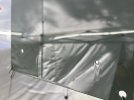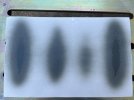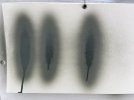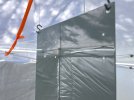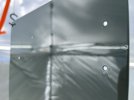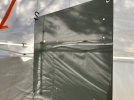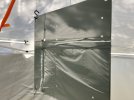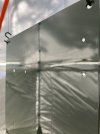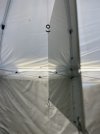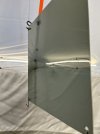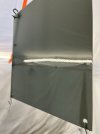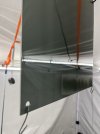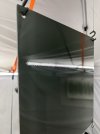Bit cooler this time. Air 66F, panel 70F. 10% SPI reducer mixed in, made a huge difference. Turned fluid knob in a quarter turn more than last time. Obviously wasn't enough and/or I was moving too slow. Much smoother results, except for the runs and trash. PSI still at 30. Will try again with another quarter turn in on fluid, a bit faster, and higher PSI as instructed.
This panel is 1ftx1ft for scale. I need to get some 2x2 panels to test on. Should I keep prepping panels with epoxy sanded to 400?
Did a few spray pattern tests too, between .5 and 1 second bursts. All tests had very fine droplets. Pattern height is about 10-12" at ~6" distance. Is that good? One 40 PSI test didn't look much different, maybe because it was so much thinner this time. Three turns in on fluid was too much, pattern shrunk a lot.
This panel is 1ftx1ft for scale. I need to get some 2x2 panels to test on. Should I keep prepping panels with epoxy sanded to 400?
Did a few spray pattern tests too, between .5 and 1 second bursts. All tests had very fine droplets. Pattern height is about 10-12" at ~6" distance. Is that good? One 40 PSI test didn't look much different, maybe because it was so much thinner this time. Three turns in on fluid was too much, pattern shrunk a lot.
Attachments
Last edited:

